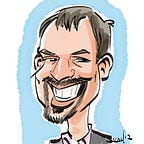Getting from point A to point B has been one of humanity’s greatest preoccupations throughout history. While we’ve developed new methods of transportation such as railroads, cars, trucks, and airplanes, they never seem to be fast enough. Big data could make transportation even easier by making it possible to build systems that recognize traffic flows and respond quickly without any human intervention.
Traffic Lights
Take the humble traffic light. These things not only keep us safe, but also direct the flow of traffic in an orderly way to get us where we’re going.
The only problem is when people aren’t quite so orderly. A lot of these lights are programmed in isolation based on what an engineer thought would be “normal” traffic. If you’ve been stuck bumper-to-bumper after a sporting event or concert, then you’ll know how bad this can be.
A traffic system using big data can eliminate these headaches. A system could monitor the flow of traffic on the roads. It could adjust the flow of traffic based on the conditions it sees. For example, in light traffic it could use the standard timings. In heavy traffic, it could keep the green lights going longer in a certain direction. Los Angeles has already synchronized its traffic lights.
Connected Cars
A number of new cars are being sold as “connected cars” with an internet connection. Most of the time, they’re used to sync with smartphones to play music over the car stereo or serve as a hands-free device for phone calls.
They also have a lot ofdiagnostic information on the engines and can report back to mechanics when the engines need maintenance. A smart traffic control system can make use of these connected cars. The system could query the car and see that its engine is idling, or that the car is accelerating and braking repeatedly. If it notices a lot of these at once,the system will know that there’s a traffic jam.
The system can start adjusting the timing of traffic lights once again without the need for an engineer to watch the traffic and guess light timings that might work. The system will get immediate feedback and be able to react in real time.
Pollution Monitoring
Many areas have installed monitors to track air quality. With a warming planet, we’re going to have to encourage people to keep the air as clean as possible.
While air quality monitors are useful for seeing what the atmosphere is doing, just like traffic lights, they’re all isolated from each other. A big data system can use this information to track the most heavily polluted areas and then help authorities take action.
A high amount of particulates in an area could mean that a lot of people are driving. Perhaps the area isn’t served by enough transit. Maybe the roads can’t support enough cars. Planning agencies could convince bus companies to run more routes or local governments to upgrade their roads.
Seeing Patterns
The biggest advantage of big data is its ability to sift through billions of data points, including car trips, traffic light changes, and pollution monitors, to see larger trends much easier and more efficiently than a human can.
With big data, planners will be able to have a bigger view of transportation systems as a whole: cars, trains, light rail, buses, and even pedestrians. They’ll be able to see who’s going where, and plan for more capacity.
They’ll also be able to see who’s using which method of transportation. If an agency notices a lot of people driving when they could be using transit, they’ll want to know why. They can propose fare reductions on days when the sensors detect a lot of pollution.
For example, an agency could see that the route from one city to another is choked with commuters. An agency could propose a new artery or transit system to take off some of the load. They’ll be able to do this because they know exactly where people’s journeys are beginning and ending. They could track cars using devices that count the number of cars, traffic cameras, and even connected cars.
The city of San Diego uses big data to track who’s using smart cards on its buses and light rail system to cut down on fare evasion and to understand where passengers are going.
When they build a new road or transit stop, they’ll know that this is exactly what commuters need. In places where big transit projects are up for voter approval, they might have a better chance of getting approved because the proposals will be based on the actual data behind the need, rather than political pull.
Conclusion
Big data can make our lives on the road much easier by tying together isolated, local traffic patterns and integrating them into a coherent view, letting planners make the best possible decisions in the future.
Originally published at www.mapr.com.
